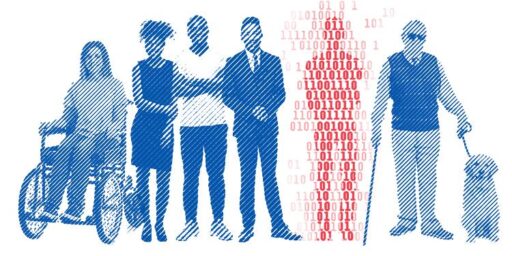In today’s diverse workforce, the importance of upholding employee rights cannot be understated. One area that requires special attention is workplace discrimination laws. Understanding these laws is crucial for both employers and employees in creating a safe and inclusive work environment. Let’s delve into the intricacies of workplace discrimination laws and explore the rights and protections they afford to individuals in the workplace.

Recognizing Types of Workplace Discrimination
When it comes to workplace discrimination, it’s crucial for employees to understand the various types that can occur. By recognizing the different forms of discrimination, individuals can better protect their rights and take appropriate action if necessary. Some common types of workplace discrimination include:
- Gender Discrimination: This occurs when an individual is treated unfairly due to their gender, whether it’s related to hiring, promotions, pay, or job assignments.
- Racial Discrimination: Discrimination based on a person’s race or ethnicity is illegal in the workplace, yet it still persists in many organizations.
- Age Discrimination: When an employee is treated unfairly due to their age, whether they are considered too young or too old for certain positions or opportunities.
Understanding these various forms of discrimination is crucial for employees to protect their rights and ensure a fair and inclusive work environment for all. By being aware of these issues, individuals can address any instances of discrimination they may encounter and seek appropriate remedies through legal channels if needed.

Key Components of Anti-Discrimination Laws
Understanding workplace discrimination laws is crucial for employees to protect their rights and ensure a fair and inclusive work environment. These laws are designed to prevent unfair treatment based on characteristics such as race, gender, age, religion, disability, or sexual orientation. include:
- Protected Characteristics: Laws specify which characteristics are protected from discrimination, such as race, gender, and disability.
- Prohibited Behaviors: Discriminatory actions such as harassment, retaliation, and unequal pay are prohibited by law.
- Reporting Procedures: Employers are required to have procedures in place for reporting discrimination and taking appropriate action.
| Characteristic | Description |
|---|---|
| Race | Protection against discrimination based on race or ethnicity. |
| Gender | Protection against discrimination based on gender identity or expression. |
| Disability | Protection against discrimination based on physical or mental disabilities. |

Steps to Take if You Experience Discrimination
It is important to know your rights and take action if you experience discrimination in the workplace. Here are some steps you can take:
- Document the Incident: Keep detailed notes of the discrimination you have experienced, including dates, times, and witnesses.
- Report the Discrimination: Bring the issue to the attention of your HR department or supervisor. Make sure to follow your company’s policies and procedures for reporting incidents of discrimination.
- Seek Legal Advice: If the discrimination continues despite reporting it, consider consulting with an employment lawyer who specializes in discrimination cases.
If you believe you have been a victim of discrimination, do not suffer in silence. Take the necessary steps to protect your rights and ensure a fair and equal work environment for yourself and your coworkers.

Creating an Inclusive Work Environment
In order to create an inclusive work environment, it is essential for employers to understand workplace discrimination laws and ensure that all employees’ rights are protected. Discrimination can take many forms, including but not limited to race, gender, age, disability, and sexual orientation. It is crucial for employers to educate themselves and their staff on these laws to prevent any incidents of discrimination from occurring.
Employees have the right to work in an environment free from discrimination and harassment. Understanding workplace discrimination laws not only helps employers avoid legal trouble, but also fosters a more positive and productive work environment. By promoting diversity and equality in the workplace, employers can attract and retain top talent, improve employee morale, and ultimately enhance the overall success of their organization.
Closing Remarks
In conclusion, understanding workplace discrimination laws is vital in advocating for employee rights and ensuring a fair and inclusive work environment for all. By being knowledgeable about your rights and standing up against discrimination, you not only empower yourself but also contribute to a more just and equitable society. Remember, every individual deserves to be treated with respect and dignity in the workplace. Let’s continue to strive for equality and justice for all. Thank you for reading.
